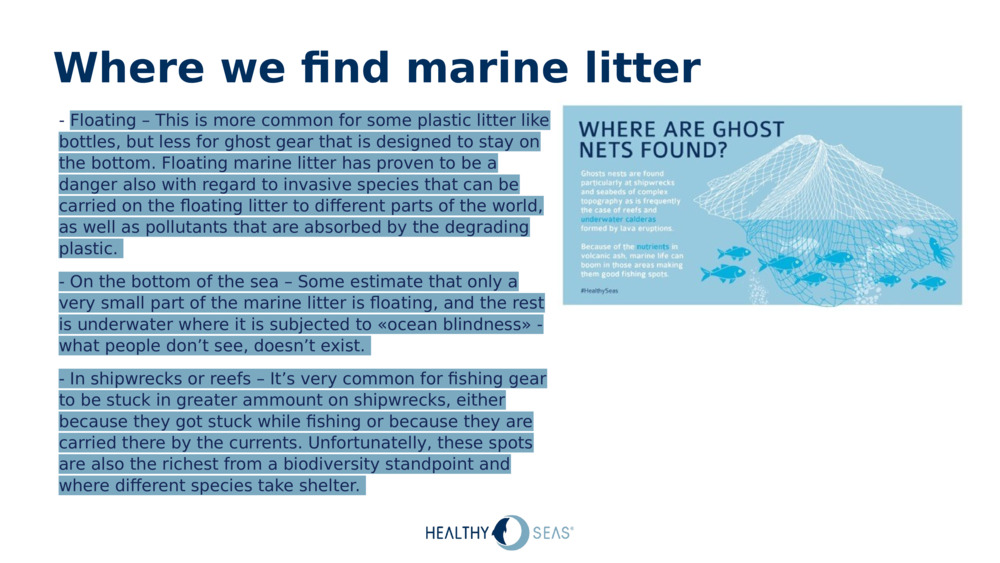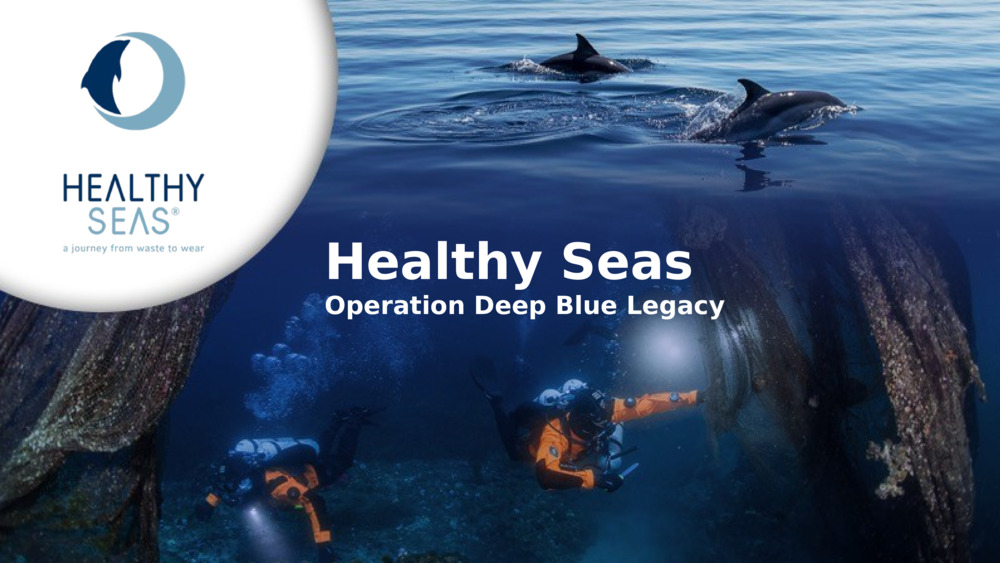Where we find marine litter
Where we find marine litter
Where we find marine litter - Floating – This is more common for some plastic litter like bottles, but less for ghost gear that is designed to stay on the bottom. Floating marine litter has proven to be a danger also with regard to invasive species that can be carried on the floating litter to different parts of the world, as well as pollutants that are absorbed by the degrading plastic. - On the bottom of the sea – Some estimate that only a very small part of the marine litter is floating, and the rest is underwater where it is subjected to «ocean blindness» - what people don’t see, doesn’t exist. - In shipwrecks or reefs – It’s very common for fishing gear to be stuck in greater ammount on shipwrecks, either because they got stuck while fishing or because they are carried there by the currents. Unfortunatelly, these spots are also the richest from a biodiversity standpoint and where different species take shelter.

Original Slide Deck: Healthy Seas Operation Deep Blue Legacy
Topics: Sustainable Resources. Biodiversity. Ocean. Ecosystem Services. Plastic Pollution. Cultural Heritage.
Suitable Ages: 11. 12. 13. 14. 15. 16. 17. 18.
Keywords: Biodiversity. Changing Environment. Conservation. Critical Thinking. Ecosystem. Ecosystem Diversity. Ecosystems. Field Work. Future Generation. Habitats. Historic Preservation. Legacy. Marine Life. Microplastics. Oceans. Plastics. Pollution. Project. Research. Secondary Education. Species Diversity.
Uploaded By: Healthy Seas Foundation
Number of bundles using this content: 1
Licensed under CC BY 4.0
This content has been used in the following resource bundles:
Operation Deep Blue Legacy
Operation Deep Blue Legacy is an extraordinary, collaborative conserva...
View Bundle